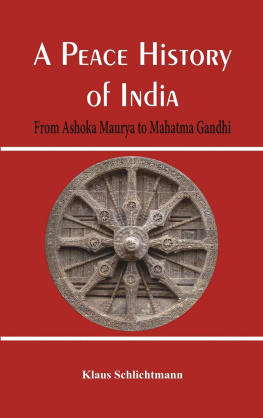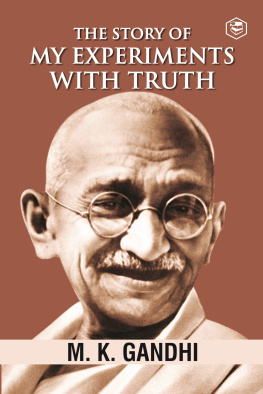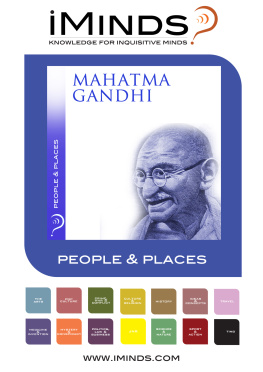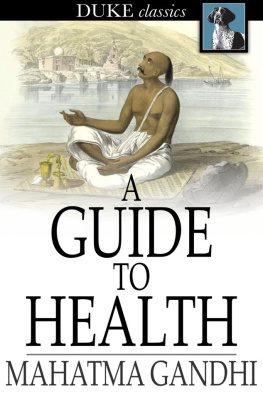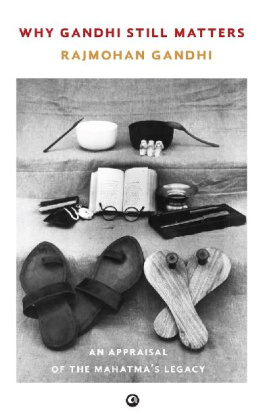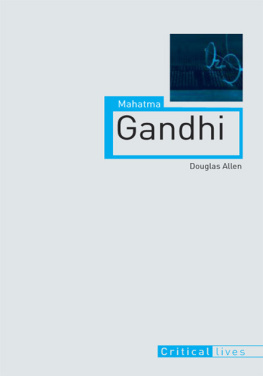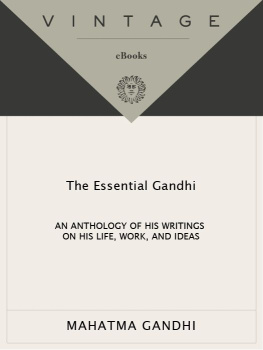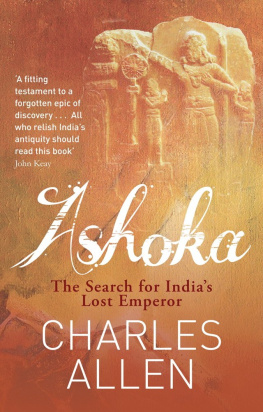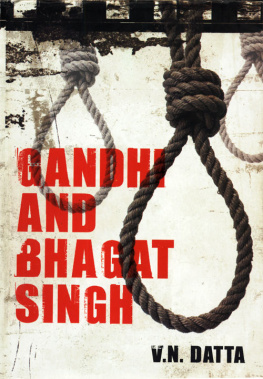A Peace History of India
From Ashoka Maurya to Mahatma Gandhi
A Peace History of India
From Ashoka Maurya to Mahatma Gandhi
Klaus Schlichtmann
English language editor Dermot McCann
A Peace History of India: From Ashoka Maurya to Mahatma Gandhi
First Published in India in 2016
Published by
Vij Books India Pvt Ltd
(Publishers, Distributors and Importers)
2/19, Ansari Road
Delhi 110 002
Phones: 91-11-43596460, 91-11-47340674
Fax: 91-11-47340674
e-mail:
web: www.vijbooks.com
Copyright 2016, Klaus Schlichtmann
ISBN: 978-93-85563-51-5 (Hardback)
ISBN: 978-93-85563-52-2 (ebook)
All rights reserved.
No part of this book may be reproduced, stored in a retrieval system, transmitted or utilized in any form or by any means, electronic, mechanical, photocopying, recording or otherwise, without the prior permission of the copyright owner. Application for such permission should be addressed to the publisher.
The views expressed in this book are of the author in his personal capacity and do not represent the views of the publishers.
FOUR PRESENTS
I come to you with four presents.
The first present is a lotus flower.
Do you understand?
The second present is a golden net.
Can you recognize it?
My third present is a shepherds roundelay.
Do your feet know to dance?
My fourth present is a garden
Planted in the wilderness.
Could you work there?
I come to you with four presents.
Do you dare accept them?
(Accorded to the Buddha)
Klaus Schlichtmann is author of Japan in the World, Shidehara Kijuro, Pacifism and the Abolition of War (2 vols.), Lanham Boulder, New York, Toronto etc., Lexington Books, 2009.
For Irena
Frank and Mark Palok
History is a set of lies agreed upon. (ascribed to Napoleon Bonaparte)
There is also an issue of intellectual fairness in dealing with global history (Amartya Sen)
Lead us from the unreal to the real. Lead us from darkness to light. Lead us from death to immortality. (Brihadaranyaka-Upanishad 1.3.28)
Denn die allmchtig bildende Zeit will eben, da die Ideen auch endlich Recht behalten, so da: in den Ideen leben, und in der Welt leben, nicht mehr so ganz zweierlei sey, welche Gleichsetzung eben auch der Sinn und die Bedeutung aller Geschichte ist. Erathsrath von Berger, Ueber Volks-Eigenthuemlichkeit und den Gegensatz zwischen mehreren Vlkern (About the national characteristics and the contrast between various peoples), Kieler Bltter, vol. II, No. 1, Kiel 1916, p. 5.
Foreword
Art and History are always interconnected stories of human development. It is through a diligent study of its artefacts that a cultures development through the ages can be retraced by historians. Conversely, artists study the texts of chroniclers to create their imaginative works. This is a book that traces the history of a people in order to glean from it the many ways in which rulers and scholars have striven to bring peace. The world requires a comprehensive understanding of the growth of humanity so as to underline movements in history which brought about peace.
Mans love for peace is manifest in many ways in the cultural history of India. Peace cannot be achieved by spreading a set of principles by force. If Ashoka could spread Buddhism far and wide, it was because of his generosity. He supplemented conquest with a kind of ethics based on discourse. King Ashoka distributed his wealth generously. The edicts are there for others to follow his example: his generosity, which means generosity in kind, not mere talk.
I find in this book the scholars uninhibited faith in the unity of humanity. He refers to the complicated religious ideas and rituals, the scholarly language, the highly developed art forms and the social and political systems to which the earliest inscriptions and other facts give testimony, which had been communicated by the Brahmins. Since the Southeast Asian tribes and kingdoms had themselves already reached a rather civilized state, they welcomed the Indian impetus, which they felt was an enrichment of their own culture.
One of the devices used by Ashoka for the spread of Buddhist morals was the appointment of religious leaders. They were called Dharmamahamatras. They were some kind of dedicated comrades, and this included elements of benevolent control as well as faithful adherence to principles of conduct avoiding extremes, in accordance with the Buddhas middle way. The emperor reduced his army. He vowed never again to fight in a battle. He conquered the peoples hearts. He spread laws instead, because the state, law and order could not be replaced by dharma alone. Similarly, centuries later, under Dharmapala northern India appears to have been unified from the east coast to the west; between the ports of both coasts there existed periods of close economic cooperation. Through this network, art grew many styles. The old Indian myths and epics were added and blended with indigenous themes.
Buddhism is one of the greatest propagators of peace. In Buddhist practice, there are monks, scholars, bhikshus and teachers. A religious class of priests as such did not exist. Gautam Buddha was classless. He renounced a world that was full of contradictions. One such contradiction was the division into rich and poor classes. After his Enlightenment, which he achieved by meditation, he came back to the world of men to exhort people to seek a religion of their own. The spread of Buddhism has therefore been free from conflict. Mind Training is practiced to achieve compassion and wisdom. It is neither an imposition of law and order to bring about social justice, nor is it an administration of rights and duties to punish an offender. Buddhist practices assume one big humanism among all. Meditation can bring inner peace and resolve all inner conflicts ashantiand strifedwesh that cause violence. Buddhism eschewed Nationalism which is a western concept. From Nalanda, through Bengal, to the Malayan islands as well as to Tibet and China, Buddhism spread beyond Indias boundaries. There was nothing like a missionary conquest to spread a religion.
Scriptures like the Buddhist Dharma aimed at individual perfection, enlightenment, moral and spiritual elevation in knowing Gods manifestations in the universe or nature and natural laws. A human being only needed to be harmoniously connected with nature in a kind of cosmic union.
Western education for Indians stimulated a consciousness of history in the Indian intellectual. The researchers from the West, call them Indologists, always treated Indian science and ancient values as discovered facts. Ever since, Indian scholars have been exhorted to preserve and spread the lessons inscribed in ancient Indian, Brahmanical or Sanskrit, texts. The closed self-sufficient culture of India which is surrounded by mountains in the north and the ocean in the south from east to west has become a subject, Indology, mainly due to Western intervention. It was never ignorance that kept Indians quiet about themselves. It was an understanding of life as ephemeral.


